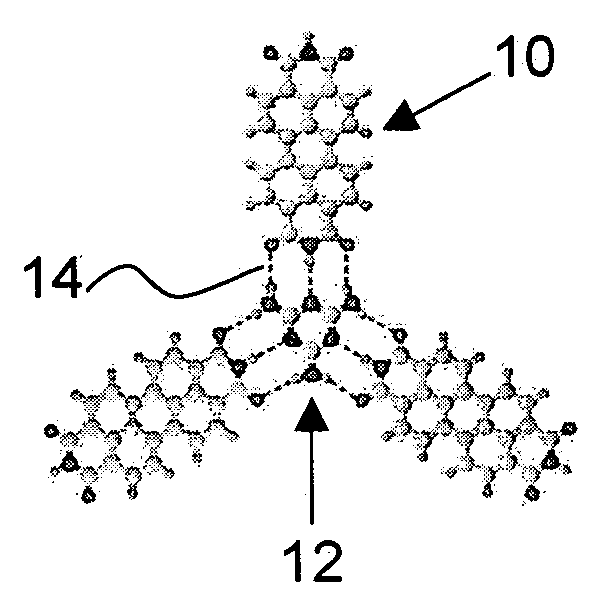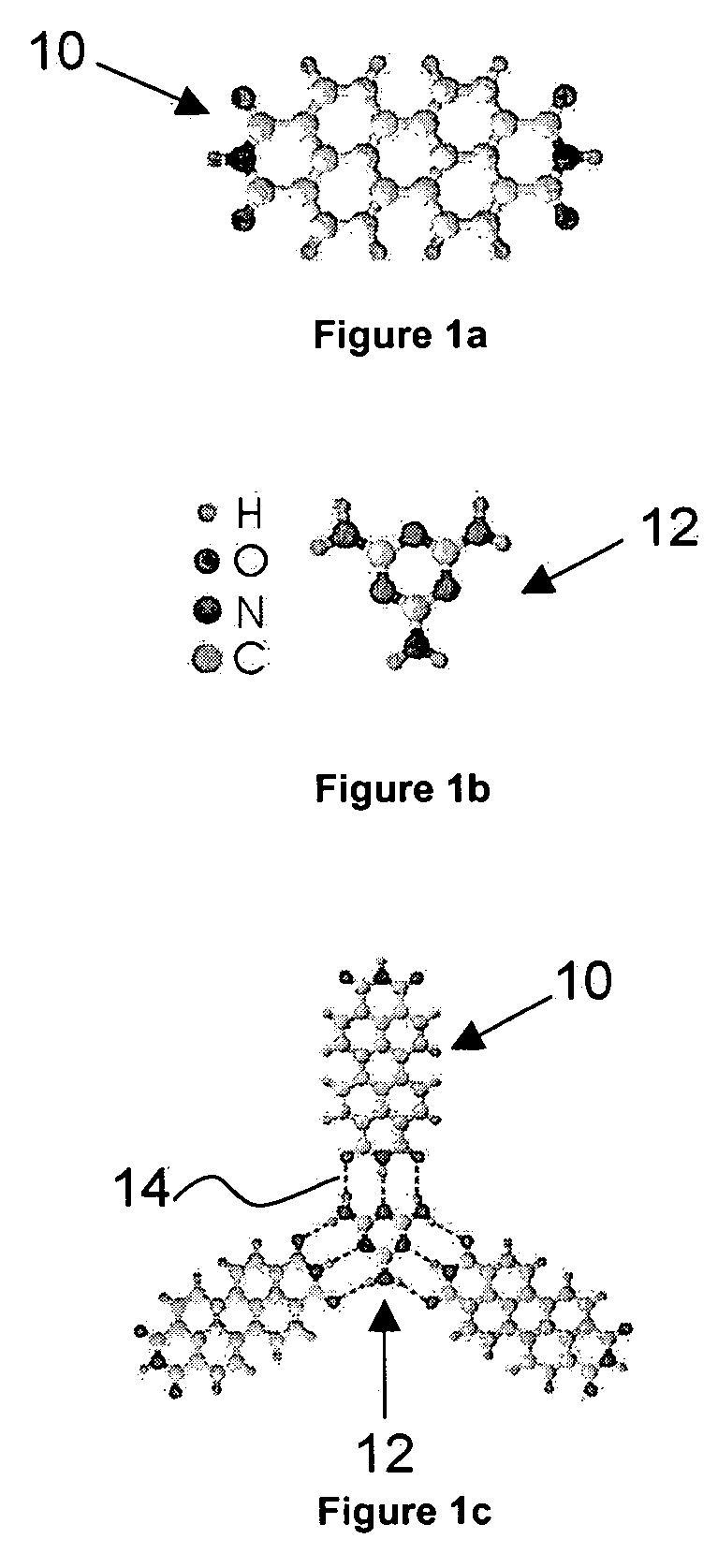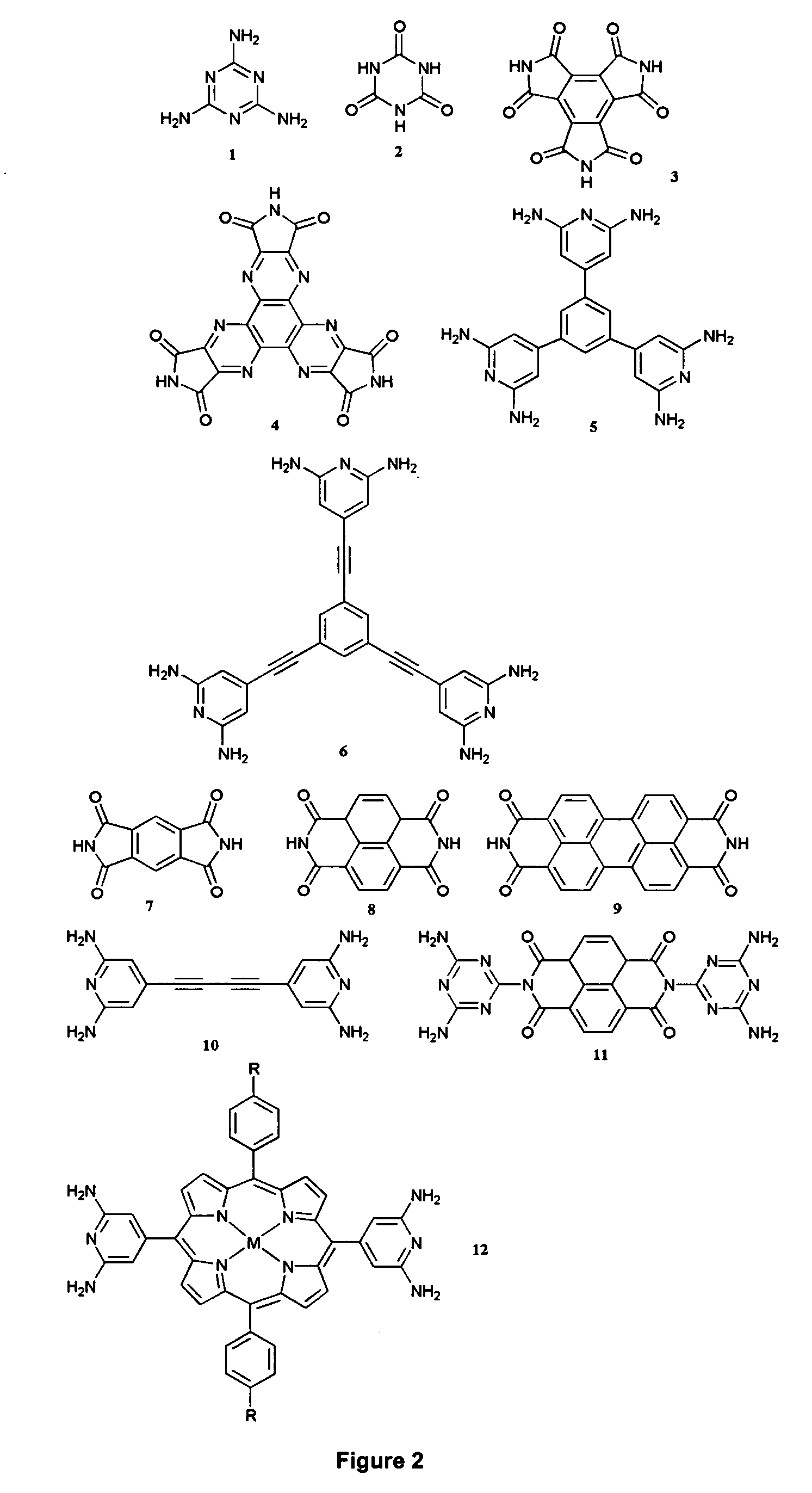Molecular templating of a surface
a surface and molecular templating technology, applied in the direction of instruments, originals for photomechanical treatment, coatings, etc., can solve the problems of limited application scope, poor control of the arrangement of molecules, and determination
- Summary
- Abstract
- Description
- Claims
- Application Information
AI Technical Summary
Benefits of technology
Problems solved by technology
Method used
Image
Examples
Embodiment Construction
[0030] Molecular entrapment in nanoscale vessels formed by surface supramolecular assembly, the method of self-assembly of a nano-scale network described here is a bimolecular method that requires the two molecules, A and B, to exhibit stronger hetero-molecular hydrogen bonding compared to homo-molecular hydrogen bonding, and also to have a compatible molecular geometry. Perylene tetra-carboxylic di-imide (PTCDI) 10, illustrated in FIG. 1a, and melamine 12, illustrated in FIG. 1b, are two such molecules that exhibit these properties. FIG. 1c illustrates the compatibility of the molecular geometries of melamine 12 and PTCDI 10 which results in three hydrogen bonds 14 per melamine-PTCDI pair. It is understood that melamine 12 and PTCDI 10 are used in the following description to exemplify the invention only and other molecular pairs that exhibit the similar properties of compatible molecular geometry and strong hetero-molecular hydrogen bonding compared to homo-molecular hydrogen bond...
PUM
| Property | Measurement | Unit |
|---|---|---|
| Width | aaaaa | aaaaa |
| Force | aaaaa | aaaaa |
| Structure | aaaaa | aaaaa |
Abstract
Description
Claims
Application Information
 Login to View More
Login to View More - R&D
- Intellectual Property
- Life Sciences
- Materials
- Tech Scout
- Unparalleled Data Quality
- Higher Quality Content
- 60% Fewer Hallucinations
Browse by: Latest US Patents, China's latest patents, Technical Efficacy Thesaurus, Application Domain, Technology Topic, Popular Technical Reports.
© 2025 PatSnap. All rights reserved.Legal|Privacy policy|Modern Slavery Act Transparency Statement|Sitemap|About US| Contact US: help@patsnap.com



